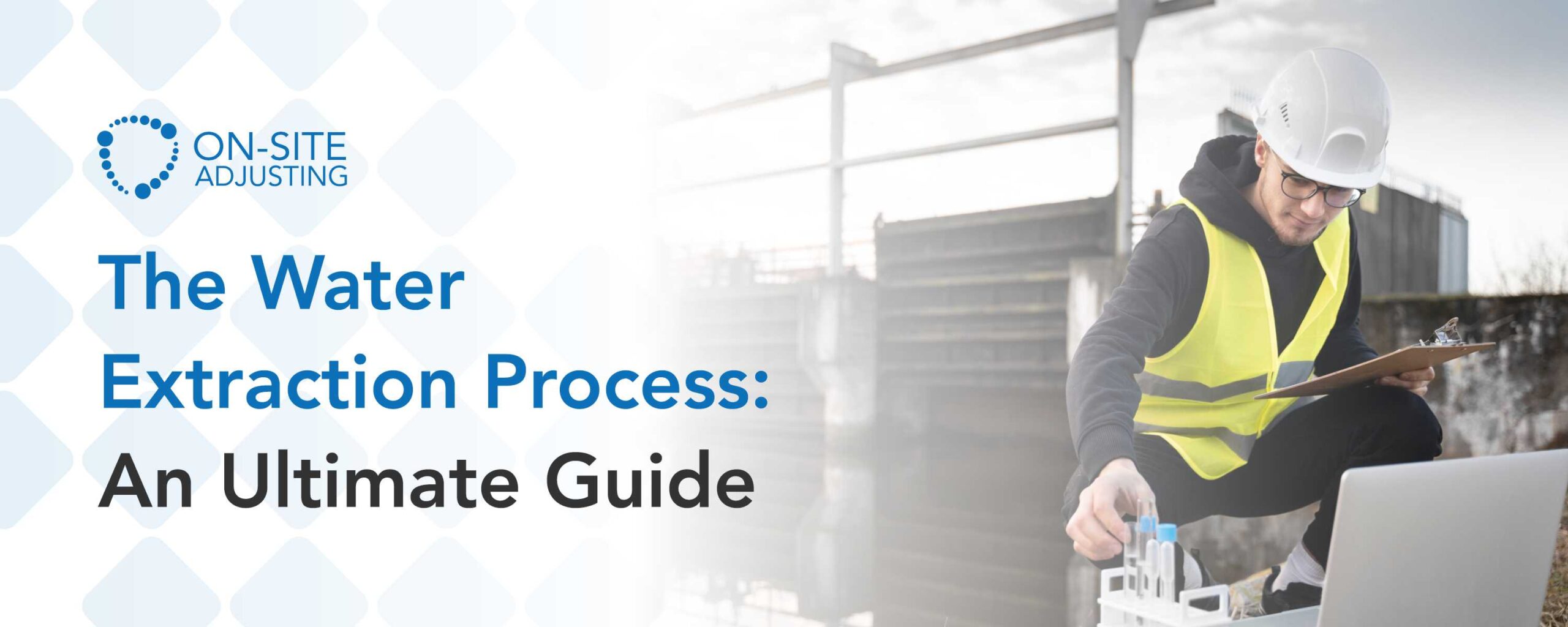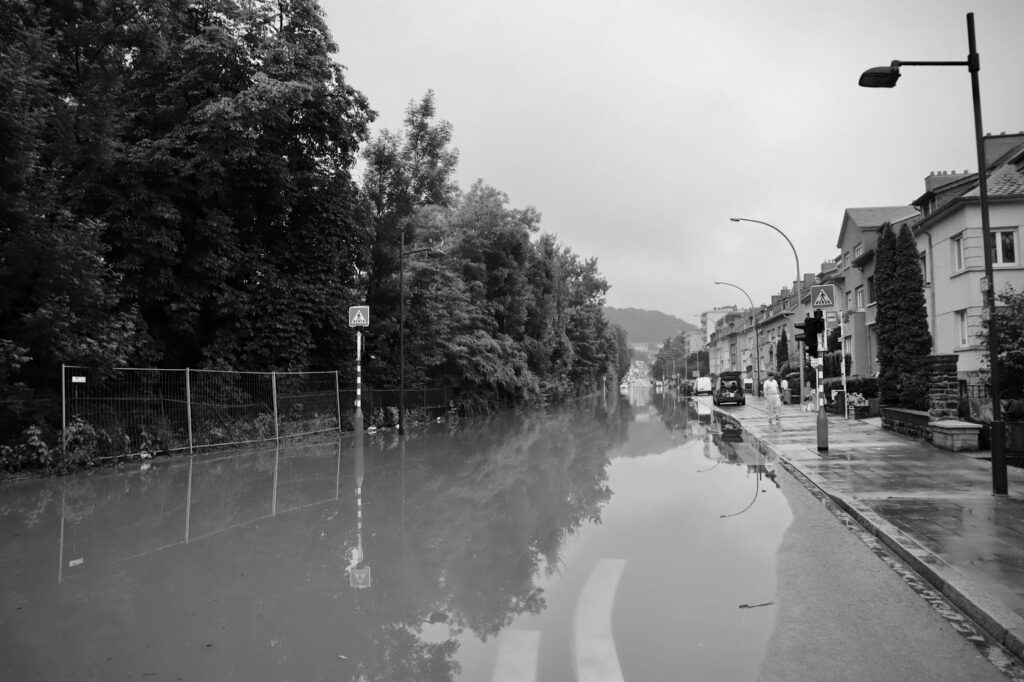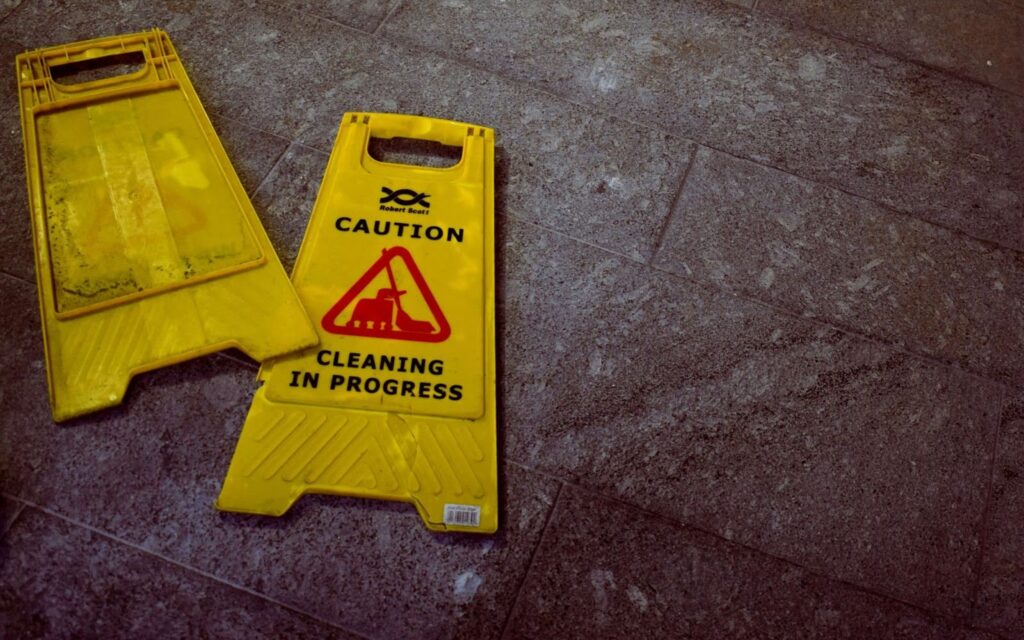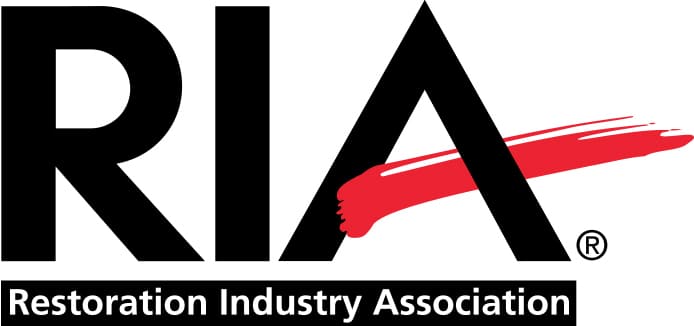

Water damage can be a homeowner’s worst nightmare. This is because it causes several structural issues. It also causes mold growth and loss of personal belongings. You will need proper water extraction to reduce the severity of these problems. It is also needed to restore your home to its original condition. At On-Site Adjusting, we can effectively handle the water extraction and restoration process. Consider reaching out to us today.
This ultimate guide will walk you through what water extraction entails. It will let you know what a usual water extraction process looks like. Also, you will learn the best way to file a water damage claim.
What is Water Extraction?
Water extraction is the process of removing excess water from a property. It usually occurs after a flood, burst pipe, or other water intrusion events. This procedure is essential to prevent further damage. You will have to take the water out and also, properly dry the affected area. The goal is to restore the property to a safe, dry, and habitable condition as quickly as possible.
What is The Water Extraction Process?

Step 1: Inspection and Assessment
The first step in the water extraction process is a thorough inspection and assessment of the affected areas. Professionals will first try to identify the source of the water intrusion. Then they will evaluate the extent of the water damage. Then, they decide on the best course of action. This assessment helps create a detailed plan for the extraction and restoration process.
During this process, professionals will use various tools to assess your home. They often use tools such as moisture meters and thermal imaging cameras. This helps them to identify hidden damage that might not be immediately visible. These tools locate moisture behind walls, under floors, and in ceilings. A thorough inspection ensures that no aspect of the restoration is overlooked. It also helps the professionals develop a comprehensive restoration plan.
Step 2: Water Removal
The water removal process begins once the assessment is complete. Professionals use high-powered pumps and vacuums to extract standing water from the property. This step is crucial to prevent further damage. It also helps to speed up the drying process. This step can take anywhere from a few hours to several days. It depends on the level of the water.
They also use submersible pumps for large volumes of water. These pumps help to remove standing water quickly. They can handle thousands of gallons per hour. This is why they’re essential for significant flooding situations.
For smaller volumes of water or less accessible areas, professionals use wet/dry vacuums. These vacuums are designed to handle both wet and dry debris. This makes them versatile tools for water removal.
Step 3: Drying and Dehumidification
After they have removed the bulk of the water, they still need to properly dry the property. Professionals use industrial-grade dehumidifiers to remove moisture from the air and affected materials. This step helps prevent mold growth and further structural damage. They will also strategically place Air Movers around the affected areas. These movers help to increase air circulation. This promotes faster drying of wet surfaces such as carpets, walls, and furniture.
Industrial-grade dehumidifiers are essential for removing moisture from the air. These powerful machines can extract gallons of water from the air each day. This significantly speeds up the drying process.
Professionals also use moisture meters and hygrometers to monitor the drying process. The meters measure the moisture content in materials and the humidity levels in the air. Regular monitoring ensures that all areas are drying properly. It also helps identify any lingering moisture that needs additional attention. This ensures that all areas reach an appropriate level of dryness.
Step 4: Cleaning and Sanitizing
Water damage can introduce contaminants into your home. This is especially true if the water is from a flood or sewage backup. The cleaning and sanitizing step involves using antimicrobial treatments to disinfect affected areas. This helps eliminate any harmful bacteria or mold spores that may be present. You also have to clean and sanitize personal belongings, furniture, and other items to ensure they are safe to use.
Different materials require different cleaning techniques. For example, you may steam-clean porous materials like carpets and upholstery. But you would need to wipe down hard surfaces like tile and wood with antimicrobial solutions.
Step 5: Water Damage Restoration
Addressing water damage is an important part of the restoration process. Water damage restoration involves drying and dehumidifying the property to prevent mold growth and further structural damage. Professionals use industrial-grade dehumidifiers and air movers to achieve this.
In addition to drying the property, professionals will also treat any areas that water has affected. This is to prevent mold and mildew growth. This step is crucial for maintaining a healthy indoor environment and preventing further damage.
Step 6: Odor Removal and Deodorization
Water infiltration often leaves behind strong odors. These odors can linger if you do not properly address them. Restoration professionals use advanced techniques to neutralize odors. Examples of these techniques include thermal fogging, ozone treatment, and air scrubbers. These techniques penetrate deep into materials to remove odors at their source. This eliminates the smells rather than merely masking them. This thorough deodorization process ensures that the home is comfortable and habitable.
Step 7: Repair and Restoration
The final step involves repairing and restoring the property to its former condition. This may include replacing drywall, painting, and installing new flooring. You may also need to replace and repair other damaged structural elements.
Restoration also extends to personal belongings. Restoration specialists will restore and clean salvageable items. This helps return the home to a habitable state.
Finally, the professionals will also perform a final inspection to ensure that all repairs meet the required standard. This comprehensive restoration process ensures that the home is safe, functional, and aesthetically pleasing.
Why You Need Professional Water Extraction Services
Many homeowners consider DIY water extraction to save some money. However, professional services are a better option. This is because they ensure a thorough and effective restoration. Here’s why you should consider a professional water extraction service:
Expertise and Equipment
Professionals have the expertise to handle water infiltration. They are knowledgeable and can easily assess and address hidden water damage. They also have the specialized equipment to handle water damage effectively. They use industrial-grade machinery that is far more powerful than consumer-grade equipment.
Health and Safety
Water damage can pose serious health risks, especially if the water is contaminated. Professionals have access to the appropriate protective gear. They also know the right safety protocols to handle hazardous materials.
They also ensure that they properly clean and sanitize all areas. This reduces the risk of mold growth and bacterial contamination.
Comprehensive Restoration
Professionals provide comprehensive restoration services that go beyond water removal. They address the underlying causes of water damage. They also perform thorough drying and dehumidification. Sometimes, they handle any necessary repairs. This comprehensive approach ensures that your home is safe to inhabit.
Elimination of Risks
DIY water extraction can be risky and ineffective. It is easy for homeowners to miss hidden water damage. This is because they do not have access to the proper equipment. Additionally, handling contaminated water without proper protective gear can pose serious health risks. Inadequate drying can result in long-term problems that are costly to fix. It’s often more cost-effective and safer to hire professionals from the start.
How to Prepare Your Home for Water Extraction

Before the professionals arrive, here are some steps you can take to prepare your home:
Ensure Safety
Turn off the electricity in affected areas to prevent electrical hazards. Avoid walking through the standing water to prevent contamination. You should also avoid doing so if you suspect structural damage.
Remove Personal Belongings
Move personal belongings, furniture, and valuables to a dry area. This helps prevent further damage and provides space for the water extraction equipment.
Document the Damage
Take photos and videos of the affected areas and damaged items. This documentation will be useful for insurance claims. It also helps the restoration company to assess the damage.
Create a Clear Path
Ensure there is a clear path for the restoration team to access the affected areas. Move obstacles out of the way and keep entryways unobstructed.
What to Do After Water Has Been Extracted
Once the water extraction process is complete, here is what you should do:
Monitor the Drying Process
Even after professional drying, it’s important to monitor the affected areas. When doing so, look out for any signs of moisture. Use moisture meters if available, or look for visible signs such as dampness or mold growth.
Replace Damaged Materials
You will need to replace any materials that have been removed during the extraction. For example, drywall, insulation, and flooring. This helps restore the integrity of your home and prevents further issues.
Clean and Disinfect
Continue cleaning and disinfecting affected areas to ensure that you have eliminated all contaminants. Pay special attention to hard-to-reach areas where mold and bacteria can thrive.
Restore Personal Belongings
If your personal belongings were affected, clean and disinfect them before bringing them back into your home. You may need to professionally clean or replace some salvageable items.
Check for Mold Growth
Mold can develop quickly after water damage. Keep an eye out for any signs of mold, such as musty odors or visible growth. If you suspect mold, contact a professional for mold remediation services.
How to File a Water Damage Claim

Your insurance will likely cover the costs of water extraction and restoration. However, this depends on the cause of the initial flooding. Here is a quick guide on how to properly file a water damage claim:
Get Professional Help
A public adjuster can handle your claim on your behalf. Unlike insurance adjusters, public adjusters work for you, not the insurance company. They are usually paid a percentage of your settlement. And working with a public adjuster often means higher and fairer settlements.
Contact Your Insurance Company
Notify your insurance company about the water damage as soon as possible. You should provide them with any necessary information. For example, inform them about the extent and cause of the damage. You should also mention the steps you’ve taken so far.
Document the Damage
Submit the photos and videos you took of the damage to your insurance company. Detailed documentation helps support your claim. It also provides evidence of the extent of the damage.
Keep All Receipts
Save receipts for any expenses related to the water damage. These expenses include temporary lodging, meals, repairs, and professional services. Your insurer may reimburse you depending on your insurance policy.
Obtain Professional Estimates
Ensure you get estimates from licensed water damage restoration companies. You will need to submit these to your insurance company. Detailed estimates can help ensure that you receive a fair settlement. They also help you negotiate the settlement if need be.
Cooperate with the Insurance Adjuster
An insurance adjuster will be assigned to assess the damage. They will also determine the payout for your claim. Ensure you are present during the inspection to answer any questions. Being present also means that you will be able to provide any additional information.
Conclusion
Water extraction is needed to mitigate damage and restore your home after a flood. Professional water extraction services provide the comprehensive approach needed to ensure effective restoration. The end goal is to return your home to its former pleasing and habitable condition. Remember that filing a claim with your insurance company can also provide financial assistance. The financial assistance can cover the costs involved in restoring your home.
To reduce the chances of getting your water claim denied, speak to a public adjuster today. At On-Site Adjusting, we have professionals who will ease the claims process for you. We also offer a free consultation for first-timers. Contact us today to get started.












